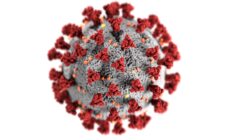What is cancer
CANCER is the disease caused by interruption in the normal process of cell division or cell growth. Cancer is the abnormality or out of balance in the cell growths. CELLS are the basic and main element of the body. These cells are capable of forming newly according to the needs of the body and replacing the old dead cells. In cancer the new cell formation is increased tremendously and the old cells doesn`t die, this leads to the abnormal cell division or growth of cancer cells. These cancer cells are capable of forming anywhere in the body and spreading to other parts of the body via blood and lymphatic systems. Cancer is commonly named according to the organ or tissue where it shows its first appearance. The categories of cancer according to the tissue affected are
-
- Carcinoma – covering tissues (like skin and lining of organs)
-
- Leukemia – blood forming tissues(bone marrow)
-
- Sarcoma – connective tissues ( bone, cartilage,)
-
- Lymphoma and myeloma – cells in the immune system are affected
-
- CNS cancer – brain and spine tissues are affected
- ADENOMA – glandular tissues involved
In all the categories the cells that are grown extra abnormally will collectively accumulate to form a tumor. These tumors are of two types 1)Benign and 2) malignant tumors
Benign tumors are the cells that are not harmful or non cancerous. They doesn`t spread and multiply. It can be removed and cured.
Malignant tumors are the main cancerous cells spreading to other parts of the body
In some forms of cancer tumors doesn`t exist.
Commonly seen cancers
-
- LUNG CANCER – cancer of the cells of the lung organ, affecting one or both the lungs. Lung cancer starts from lungs or acquired from other areas through metastasis.
-
- PROSTATE CANCER – cancer of the cells in the tiny gland called prostate (a part of reproductive system) present only in the male.
-
- BREAST CANCER – cancer of the cells in the breast, mostly the milk ducts are affected. Breast cancer occurs both in male and female, but percentage in female are dominant.
-
- BLOOD CANCER – cancer in the cells of blood, bone marrow and lymphatic systems. Mostly seen are leukemia, lymphoma and myeloma.
-
- BONE CANCER – cancer in the cells of the bones may be primary or secondary. Mostly prevailing one is OSTEOSARCOMA.
-
- KIDNEY CANCER – cancer of the kidney cells. Commonly seen kidney cancer is renal cell carcinoma.
-
- LIVER CANCER – cancer cell formation starting from the liver. Mostly seen is HEPATOCELLULAR carcinoma
-
- BRAIN CANCER – cancer cell formation in the brain cells.
-
- CERVICAL CANCER – cancer in the cells of cervix (which forms the lower part of uterus) in female.
-
- PANCREATIC CANCER – cancer formation starting in the pancreas cells. More likely condition is ADENOCARCINOMA.
-
- SKIN CANCER – cancer affecting the skin (natural protecting barrier of skin), mainly the outer layer. Most common are melanoma, BASAL cell cancer and SQUAMOUS cell cancer.
-
- OVARIAN CANCER – cancer of the ovaries of the female reproductive system.
-
- UTERINE CANCER – cancer formation in the cells of uterus seen only in female. Most likely is endometrial cancer.
-
- TESTICULAR CANCER – cancer in the testicles a male reproductive organ situated safely in the scrotum.
- THYROID CANCER – cancer starting in the gland called thyroid situated in the lower region of neck.
What are the causes and risk factors for cancer
Cancer is a compound disease with lot of known and unknown causes. The possible risk factors leading to the cause of cancer cell formation are as follows
-
- Genetic factor – some cancer run with the family history.
-
- Use of tobacco – tobacco chewing or tobacco smoking causes the cancer cell formation mainly in the lungs and mouth.
-
- Smoking- smoking is a bad habit when it reaches the level of chain smoking. Especially the second hand smoke is very dangerous in cancer formation in the lungs.
-
- Drug induced – use of certain steroid and estrogen containing drugs are likely to cause cancer of liver, gall bladder and stomach. Imbalance in estrogen administration is more likely to cause cancer in women.
-
- Exposure to harmful radiation – exposing to the radiation that are unpleasant or unwanted for the body nature are dangerous, more likely to cause skin cancer and lung cancers.
-
- Exposure to direct sunlight (UV-RAYS) – more likely to cause the skin cancer.
-
- Exposures to harmful chemicals – today chemicals are seen in every product we use for our daily cleaning process and other cosmetics and family needs. Few chemicals are very harmful in causing cancer in skin, lungs and stomach.
-
- Alcohol addiction – excess alcohol has the risk factors in producing cancer cell formation as in the basal cell carcinoma of skin. Different persons are prone to some kind of alcohol induced cancers. Even men and women have difference in cancer formed due to alcohol.
-
- Over weight – increase in weight also induce a risk in cancer formations. Mostly seen cancers in obese person are colon, breast and gall bladder cancers.
-
- Unhealthy food habit – changes in food habit is likely to cause stomach cancer and intestine cancer.
-
- Unhealthy lifestyle – living in the poor environment and poor modification against natural living.
-
- Lack of physical activity
-
- Ageing process – as the person ages the cells normal essential cell process is diminished and interrupted. This increase the risk of cancers formations.
- Few harmful viruses and bacteria – chronic infections is likely to cause liver cancer.
What are the signs and symptoms of cancer
The symptoms of cancer will vary according to the organ and area affected. Some generally seen symptoms in all types of cancer are:
-
- Unusual loss of weight without intention
-
- Loss of appetite
-
- Change in breathing pattern
-
- Chronic coughing
-
- Lump feeling in some area
-
- Pain
-
- Fatigue
- Changes seen in the bowels.
Lung cancer symptoms:
-
- Chronic coughing,
-
- complete breathlessness,
-
- increased wheezing trouble,
-
- sudden weight reduction,
-
- change in voice,
-
- difficulty swallowing,
- fatigue(tired)
Breast cancer symptoms:
The breast cancer affects only the female, in rare cases male also get affected.
-
- Lump formation in the breast area
-
- Lump formation in the armpit region
-
- Nipple inversion
-
- Sudden noticeable changes in breast size
- Dimpling of the breast skin
Prostate cancer symptoms:
The prostate gland is seen only in male. It serves as one of the important factor in male sex organ.
-
- Difficulty in starting of urination
-
- Problem of urinary tract infection
-
- Frequent urination especially at night
-
- Feeling of not fully emptied the bladder
-
- Weak streaming of urine flow
-
- Some may feel burning sensations during urination
- Least common symptom is blood in urine
Stomach cancer symptoms:
-
- Lack of desire to eat for long period of time
-
- Pain and discomfort in abdominal region
-
- Continuous vomiting
-
- Bloated feeling in abdomen
-
- Chronic fatigue or tiredness
- Unusual weight loss
Some other cancers like colon cancer, pancreatic cancer, liver cancer, etc… have the symptoms as in the stomach cancer. Kidney cancer and bladder cancer also have some common symptoms. Women mostly have the cancers like cervical cancer, vaginal cancer, and ovarian cancers. Cancer symptoms are not seen in many cases so quickly.
What are the examination to find cancer
-
- Biopsy – this method is done by cutting the tiny parts of tissues and tested by pathologist under microscope for detection of cancer cells.
-
- Blood test- It shows the presence and advancement in the cancer cell formations. Blood test describes the levels of RBC and WBCs. The HEMOGLOBULIN content is checked for the oxygen transport in the body. The platelet level shows the blood clot capabilities. Blood test also reveals the defects in filtering action by high level of waste products in blood.
- Urine test – urine is analyzed for the presence of blood, protein and other stuff in it. This can indicate the type of cancer.
-
- Chest x-rays – shows any structural abnormalities mainly in the heart and lungs to detect cancer in lungs and surroundings.
-
- CT scan – imaging procedure clearer for diagnosis not in all forms of cancers.
-
- MRI scan – this also shows images with resolution but doesn`t present definite confirmation.
- ULTRASONOGRAPHY use of ultrasound to detect the cancer in abdomen area and mainly in females for ovarian and uterine cancer.
Management therapy
Chemotherapy: In this method commonly the drugs are administered as pills or intravenously. The drug used will affect the cell divisions of cancer cells. Drug administration may be alone or in the combined forms of drugs. This therapy has its effect all over the body not on specific area. The main side effects are the hair loss, dehydration and stomach upset. Radiation therapy: This type of treatment is based on emission of certain energy on the cancer cells and damages the DNA of the cancer cells to completely eliminate them. Complete cure is obtained. Some normal cells are also affected, but they recover quickly. The main side effect of this treatment is skin irritation. Side effects vary according to the patient condition, type of cancer treated and part of the body treated. Immunotherapy: This therapy is done by increasing the immune response of the body to the cancer cells. In few types of cancer, immunotherapy works to a great extent in controlling the cancer cells dividing. It helps to repair the normal cells from damages. Surgery: Certain surgical procedures are done to remove the cancerous tissues completely. Surgery is very beneficial in cases of cancers that are not spread to other parts of the body. Today surgery is the best option for curing the various cancers. Examples for surgery are mastectomy for breast cancer and prostatectomy for prostate cancer.
How to prevent cancer cell formation
Though the causes for cancer are unknown, it is possible to prevent cancer risk factors from causing cancers.
-
- Avoid the usage of tobacco smoking’s and second hand smoking.
-
- Increasing the alkaline type food than the acidic foods.
-
- Maintain a healthy diet plan containing more vegetables and fruits.
-
- Reduce the intake of fatty foods and increase the fiber content in food
-
- Avoid direct exposure to sun especially the harmful UV rays
-
- Avoid exposure to the harmful radiations
-
- Limiting the usage of chemicals in our products
-
- Be safe from the viral infections
-
- Avoid sex with multiple partners to prevent HIV infections
-
- Keep regular exercise plan to be physically active, morning walk is best option.
- Make changes in occupation style to be physically active.
Conclusion:
The main reasons for cancer are urbanization, industrialization and increased population. These increase the risk of cancer in the developing countries. Every nation has their cancer control programs and they are implemented in full swing to spread awareness about cancer. Various researches are under progress in all over the world to cure cancer completely. The prevention awareness for cancer is increasing day by day. Some cancer can be easily cured if detected in very earlier stage. Before the progressiveness of the cancer cells, it should be detected and treated with best possible way available in today`s modern world.





